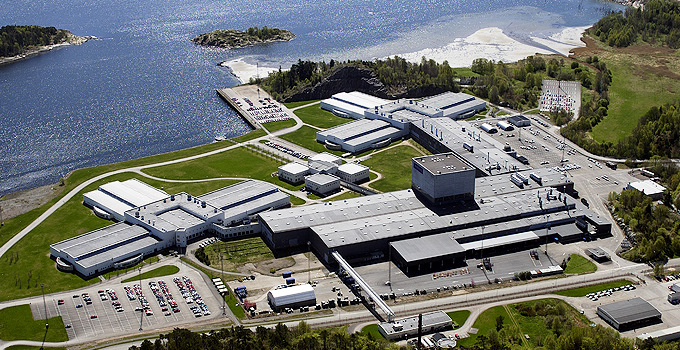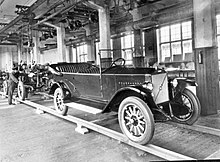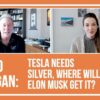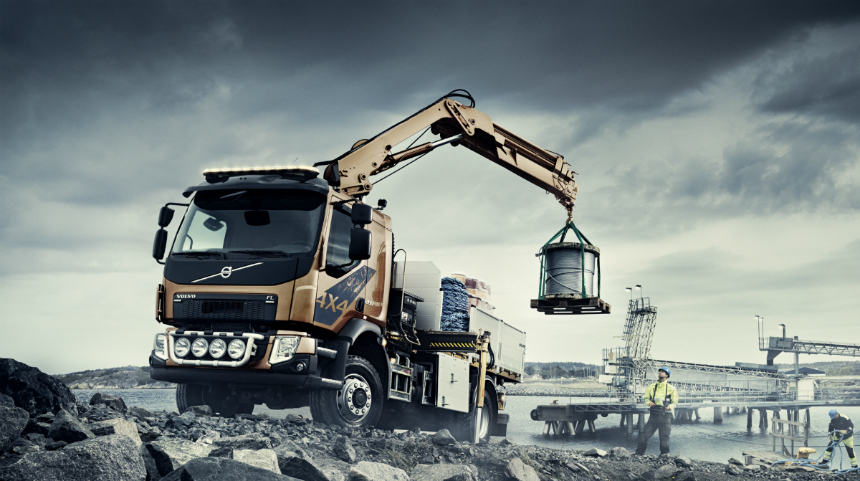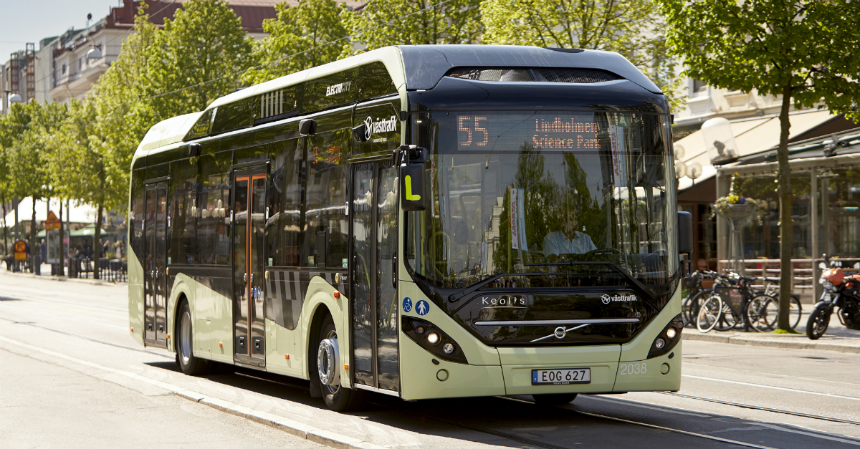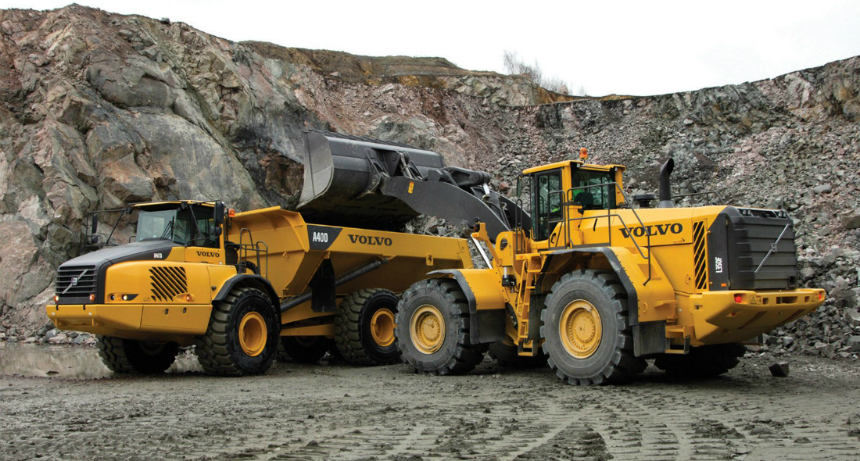Шведский концерн, производивший прекрасные, безопасные и удобные легковые автомобили Volvo, стал одним из наиболее влиятельных на европейском рынке премиальных машин. Но ведь с 2000 по 2007 годы концерн не развивался, предлагая покупателям одинаковые модели со старыми двигателями. Секрет успеха шведской автомобильной компании заключается в союзе с китайцами. Формальная корпорация Geely просто выкупила шведское предприятие, но договор больше напоминает слияние.
Китайцы дали обязательство не переименовывать марку, сохранить европейский бренд Вольво, страна производитель должна остаться Швеция, а Geely не имеет права использовать технические наработки концерна в своих машинах. Интересно, соблюдают ли китайцы подписанный договор?
Есть ли в мире другие страны, где собирают Вольво?
Многие автолюбители путают Швецию с другими скандинавскими и европейскими странами, считая, что Volvo собирается в Норвегии, Швейцарии или даже в Германии. На самом деле, единственный завод корпорации Вольво находится в Гетеборге, Швеция. Это предприятие даже после покупки китайцами концерна остается в данном городе и не сокращает своей деятельности.
Наоборот, китайские инвестиции дали шведской компании огромный толчок. Есть несколько важных аспектов, которые изменились в 2007 году:
появились деньги и технические возможности для разработки совершенно нового модельного ряда;
соединились усилия дизайнеров мощной уже на то время компании Geely и шведов;
бренд Вольво получил огромный китайский рынок, на котором его авто продаются без лишних пошлин;
новые технологии стали внедряться в машины благодаря щедрым инвестициям;
завод расширил штат, усовершенствовал производственные линии и получил много прочих преимуществ.
Если сегодня рассматривать технологичность производителей автомобилей, можно смело заявить, что Volvo является одним из лучших в Европе заводов. Здесь стоит новейшее оборудование, полностью все процессы сборки автоматизированы. Машины получаются не просто качественными, они, наконец, соответствуют своему ценнику. До 2007 году машины Вольво покупали только в странах Скандинавии. Они были слишком дорогими и устаревшими.
Китайские автомобили Geely после кооперации со шведами
Сразу после объединения европейского и китайского производителей под крышей одного концерна у Geely появились новые модели, которые на три головы были выше своих предшественников. Фактически весь модельный ряд сменился, новые двигатели стали давать больше лошадок, требуя меньше топлива. Да и внешний вид серии Emgrand сильно ушел вперед.
В модельной линейке Джили даже появился кроссовер, который не был заявлен до этого. Связаны такие изменения со следующими вариантами развития компании:
несмотря на запрет использования технологий Volvo, китайцы перетянули определенные наработки шведов на свою сторону;
в результате двустороннего сотрудничества с европейскими инженерами были получены новые разработки;
компания пополнилась хорошим доходным активом и смогла инвестировать в собственное производство;
в Китай пригласили на работу инженеров из Швеции.
Последнее предположение является проверенным и доказанным фактом. Но в Geely отрицают тот факт, что это связано с разработкой успешной серии автомобилей Engrand. Впрочем, для потребителя никакой разницы нет. Если компания выпускает хорошие автомобили, пусть берет технологии там, где ей это удобнее. Для потребителя важнее то, насколько качественную машину он может приобрести в салоне. Именно поэтому шведы сегодня вполне довольны семилетней кооперацией с китайцами.
Завод в Гетеборге растет и развивается, марка обзаводится новыми моделями, а все свои основные обещания корпорация Geely выполняет.
По нашему мнению, не столь важно, в каких странах собираются Вольво, ведь намного важнее восприятие от автомобиля, его надежность и комфорт. А что вы думаете об этом?
This article is about the Volvo Group (AB Volvo). For the separate manufacturer of passenger automobiles, see Volvo Cars. For other uses, see Volvo (disambiguation).
| Type | Aktiebolag |
|---|---|
|
Traded as |
Nasdaq Stockholm: VOLV B |
| ISIN | SE0000115446[1] |
| Industry | Automotive |
| Founded | 1927; 96 years ago |
| Founders | Assar Gabrielsson and Gustav Larson |
| Headquarters | Gothenburg, Sweden |
|
Area served |
Worldwide |
|
Key people |
|
| Products | Trucks, buses, construction equipment, marine and industrial engines, customer financing, insurance and related services, product related services |
| Brands |
|
| Revenue | |
|
Operating income |
|
|
Net income |
|
| Total assets | |
| Total equity | |
| Owners |
|
|
Number of employees |
|
| Subsidiaries |
|
| Website | www.volvogroup.com |
| Footnotes / references Consolidated (group) financial figures |
The Volvo Group (Swedish: Volvokoncernen; legally Aktiebolaget Volvo, shortened to AB Volvo, stylized as VOLVO) is a Swedish multinational manufacturing corporation headquartered in Gothenburg. While its core activity is the production, distribution and sale of trucks, buses and construction equipment, Volvo also supplies marine and industrial drive systems and financial services. In 2016, it was the world’s second-largest manufacturer of heavy-duty trucks with its subsidiary Volvo Trucks.[5]
Automobile manufacturer Volvo Cars, also based in Gothenburg, was part of AB Volvo until 1999, when it was sold to the Ford Motor Company. Since 2010 Volvo Cars has been owned by the automotive company Geely Holding Group. Both AB Volvo and Volvo Cars share the Volvo logo and cooperate in running the Volvo Museum in Sweden.
The corporation was first listed on the Stockholm Stock Exchange in 1935, and was on the NASDAQ indices from 1985 to 2007.[6]
Volvo was established in 1915 as a subsidiary of SKF, a ball bearing manufacturer; however both the Volvo Group and Volvo Cars regard the rollout of the company’s first car series, the Volvo ÖV 4, on 14 April 1927, as their beginning.[7]
History[edit]
Early years and international expansion[edit]
The first Volvo car, a Volvo ÖV 4, left the assembly line on 14 April 1927.
The brand name Volvo was originally registered as a trademark in May 1911 with the intention to be used for a new series of SKF ball bearings. It means «I roll» in Latin, conjugated from «volvere». The idea was short-lived, and SKF decided to simply use its initials as the trademark for all its bearing products.[8]
In 1924, Assar Gabrielsson, an SKF sales manager, and Gustav Larson, a KTH educated engineer, decided to start construction of a Swedish car. They intended to build cars that could withstand the rigors of the country’s rough roads and cold temperatures.[9]
AB Volvo began activities on 10 August 1926. After one year of preparations involving the production of ten prototypes, the firm was ready to commence the car-manufacturing business within the SKF group. The Volvo Group itself considers it started in 1927, when the first car, a Volvo ÖV 4, rolled off the production line at the factory in Hisingen, Gothenburg.[10] Only 280 cars were built that year.[11] The first truck, the «Series 1», debuted in January 1928, as an immediate success and attracted attention outside the country.[8] In 1930, Volvo sold 639 cars,[11] and the export of trucks to Europe started soon after; the cars did not become well known outside Sweden until after World War II.[11] AB Volvo was introduced at the Stockholm Stock Exchange in 1935 and SKF then decided to sell its shares in the company. By 1942, Volvo acquired the Swedish precision engineering company Svenska Flygmotor (later renamed as Volvo Aero).[8]
Pentaverken, which had manufactured engines for Volvo, was acquired in 1935, providing a secure supply of engines and entry into the marine engine market.[12]
The first bus, named B1, was launched in 1934, and aircraft engines were added to the growing range of products at the beginning of the 1940s. Volvo was also responsible for producing the Stridsvagn m/42. In 1963, Volvo opened the Volvo Halifax Assembly plant, the first assembly plant in the company’s history outside of Sweden in Halifax, Nova Scotia, Canada.
In 1950, Volvo acquired the Swedish construction and agricultural equipment manufacturer Bolinder-Munktell.[13] Bolinder-Munktell was renamed as Volvo BM in 1973.[14] In 1979, Volvo BM’s agricultural equipment business was sold to Valmet.[15] Later, through restructuring and acquisitions, the remaining construction equipment business became Volvo Construction Equipment.[13]
In the 1970s, Volvo started to move away from car manufacturing to concentrate more on heavy commercial vehicles. The car division focused on models aimed at upper middle-class customers to improve its profitability.[16]
Partnerships and merging attempts[edit]
In 1977, Volvo tried to combine operations with rival Swedish automotive group Saab-Scania, but the latter company rejected it.[8]
Between 1978[8] and 1981, Volvo acquired Beijerinvest, a trading company involved in the oil, food, and finance businesses. In 1981, those sectors represented about three quarters of the company revenue, while the automotive sector amounted for most of the rest.[16]
In the early 1970s, French manufacturer Renault and Volvo started to collaborate.[17] In 1978, Volvo Car Corporation was spun off as a separate company within the Volvo group[18] and Renault acquired a minority stake,[8] before selling it back in the 1980s after a restructuring.[17] In the 1990s, Renault and Volvo deepened their collaboration and both companies partnered in purchasing, research and development and quality control while increasing their cross-ownership. Renault would assist Volvo with entry-level and medium segment vehicles and in return, Volvo would share technology with Renault in upper segments. In 1993, a 1994 Volvo-Renault merger deal was announced. The deal was barely accepted in France, but it was opposed in Sweden, and the Volvo shareholders and company board voted against it.[8][17] The alliance was officially dissolved in February 1994 and Volvo sold off its minority Renault stake in 1997.[8] In the 1990s, Volvo also divested from most of its activities outside vehicles and engines.[8]
In 1991, the Volvo Group participated in a joint venture with Japanese automaker Mitsubishi Motors at the former DAF plant in Born, Netherlands. The operation, branded NedCar, began producing the first generation Mitsubishi Carisma alongside the Volvo S40/V40 in 1996.[19][20] During the 1990s, Volvo also partnered with the American manufacturer General Motors. In 1999, the European Union blocked a merger with Scania AB.[8]
Refocusing on heavy vehicles[edit]
In January 1999, Volvo Group sold Volvo Car Corporation to Ford Motor Company for $6.45 billion. The division was placed within Ford’s Premier Automotive Group alongside Jaguar, Land Rover and Aston Martin. Volvo engineering resources and components would be used in various Ford, Land Rover and Aston Martin products, with the second generation Land Rover Freelander designed on the same platform as the second generation Volvo S80. The Volvo T5 petrol engine was used in the Ford Focus ST and RS performance models, and Volvo’s satellite navigation system was used on certain Aston Martin Vanquish, DB9 and V8 Vantage models.[21][22][23] In November 1999, Volvo Group purchased a 5% stake in Mitsubishi Motors, as part of a partnership deal for the truck and bus business.[24] In 2001, after DaimlerChrysler bought a large Mitsubishi Motors stake,[25] Volvo sold its shares to the former.[26]
Renault Véhicules Industriels (which included Mack Trucks, but not Renault’s stake in Irisbus) was sold to Volvo during January 2001, and Volvo renamed it Renault Trucks in 2002. Renault became AB Volvo’s biggest shareholder with a 19.9% stake (in shares and voting rights) as part of the deal.[27] Renault increased its shareholding to 21.7% by 2010.[28]
AB Volvo acquired 13% of the shares in the Japanese truck manufacturer Nissan Diesel (later renamed UD Trucks) from Nissan (part of the Renault-Nissan Alliance) during 2006, becoming a major shareholder. Volvo Group took complete ownership of Nissan Diesel in 2007 to extend its presence in the Asian Pacific market.[9][29]
Renault sold 14.9% of their stake in AB Volvo in October 2010 (comprising 14.9% of the share capital and 3.8% of the voting rights) for €3.02 billion. This share sale left Renault with around 17.5% of Volvo’s voting rights.[28] Renault sold their remaining shares in December 2012 (comprising 6.5% of the share capital and 17.2% of the voting rights at the time of transaction) for €1.6 billion, leaving Swedish industrial investment group Aktiebolaget Industrivärden as the largest shareholder, with 6.2% of the share capital and 18.7% of the voting rights.[30][31] That same year, Volvo sold Volvo Aero to the British company GKN.[32] In 2017 Volvo Cars owner Geely became the largest Volvo shareholder by number of shares after acquiring an 8.2% stake, displacing Industrivärden. Industrivärden kept more voting rights than Geely (Geely getting a 15.8%).[33]
In December 2013, Volvo sold its Volvo Construction Equipment Rents division to Platinum Equity.[34] In November 2016, Volvo announced its intention of divesting its Government Sales division, made up mainly of Renault Trucks’ Renault Trucks Defense but also of Panhard, ACMAT, Mack Defense in the United States, and Volvo Defense.[35] The project for selling the division was later abandoned and, in May 2018, Volvo reorganized Renault Trucks Defense and renamed it Arquus.[36]
In December 2018, Volvo announced it intended to sell a 75.1% controlling stake of its car telematics subsidiary WirelessCar to Volkswagen with the aim of focusing on telematics for commercial vehicles.[37] The sale was completed in March 2019.[38]
In December 2019, Volvo and Isuzu announced their intention of forming a strategic alliance on commercial vehicles. As part of the agreement, Volvo would sell UD Trucks to Isuzu.[39] The «final agreements» for the alliance were signed in October 2020, with UD Trucks sale pending on regulatory clearances.[40] The sale was completed in April 2021.[41]
In the early 2020s, Volvo partnered with other manufacturers to deploy infrastructure for non-hydrocarbon energies. In April 2020, Volvo and Daimler (later Daimler Truck) announced that the former planned to acquire half of Daimler’s fuel cell business, forming a joint venture between the two companies.[42] In March 2021, the fuel cell business was reorganised as a joint venture called Cellcentric.[43] In December 2021, Volvo, Daimler Truck, and Traton agreed to the formation of an equally owned joint venture aimed to build an electric vehicle charging network for heavy vehicles in Europe.[44] In December 2022, the joint venture (called Commercial Vehicle Charging Europe) began operations under the trade name Milence.[45]
In April 2021, Volvo announced that it had signed up a new partnership with steel manufacturer SSAB to develop fossil fuel-free steel for future use in Volvo’s vehicles.[46] The partnership comes is derived from SSAB’s own green steel venture, HYBRIT.[47]
Corporate[edit]
Business[edit]
Volvo Museum in Gothenburg
Volvo Group’s operations include:
- Volvo Trucks (midsize-duty trucks for regional transportation and heavy-duty trucks for long-distance transportation, as well as heavy-duty trucks for the construction work segment)
- Mack Trucks (light-duty trucks for close distribution and heavy-duty trucks for long-distance transportation)
- Renault Trucks (heavy-duty trucks for regional transportations and heavy-duty trucks for the construction work segment)
- Arquus (military vehicles)[48]
- Dongfeng Commercial Vehicles (45%) (trucks)
- VE Commercial Vehicles Limited Ltd., India (VECV), a joint venture between Volvo Group and Eicher Motors Limited in which Volvo holds 45.6% (trucks and buses)
- Volvo Construction Equipment (construction equipment)
- SDLG (70%) (construction equipment)
- Volvo Group Venture Capital (corporate investment company)
- Volvo Buses (complete buses and bus chassis for city traffic, line traffic and tourist traffic)
- Volvo Financial Services (customer financing, inter-group banking, as real estate administration)
- Volvo Penta (marine engine systems for leisure boats and commercial shipping, diesel engines and drive systems for industrial applications)
- Volvo Energy (management and support for electric vehicles, batteries and electrification networks)[49]
According to the company, in 2021 almost two thirds (62%) of its revenue came from trucks and services related to them. Second came construction equipment (25%), and the rest was from buses, marine engines, and minor operations, each of them below 5%.[50]
Production facilities[edit]
Volvo powertrain facilities in Skövde, pictured in 2010
Volvo has various production facilities. As of 2022, it has plants in 19 countries, with 10 other countries having independent assemblers of Volvo products. The company also has product development, distribution, and logistics centers.[51] Its first plant for vehicle assembly, on the Hisingen island, was owned by SKF until it was made part of the Volvo company in 1930.[8] That year, Volvo acquired its supplier of engines in Skövde (Pentavarken).[52] In 1954, Volvo built a new truck assembly plant in Gothenburg and, in 1959–[8] 1964,[53] a car assembly plant in Torslanda.[8] The first truly branched away plant of Volvo was the Floby gearbox plant (100 kilometers to the northeast of Gothenburg), incorporated in 1958. In the 1960s and early 1970s, Volvo and its assembly
partners opened plants in Canada, Belgium, Malaysia,[52] and Australia.[54] In the early part of that period Volvo also started to venture into vehicles other than passenger cars and road-going commercial vehicles by acquiring the Eskilstuna plant (Bolinder-Munktell).[52] From the 1970s onwards, Volvo set up various facilities (Bengtsfors, Lindesberg, Vara, Tanumshede, Färgelanda,[52] Borås[55]), most of them within a 150 kilometer radius of Gothenburg,[52] and gradually acquired the Dutch DAF car plants.[8] It also established its first South American plant in Curitiba, Brazil.[56]
From the mid-1970s onwards, Volvo began building assembly plants with smaller assembly lines, more worker-centric and with better use of automation, leaving Fordism. These were Kalmar (car assembly, built in 1974),[53] Tuve (truck assembly, 1982)[53][57] and Uddevalla (car assembly, 1989). Kalmar and Uddevalla were closed down in the early 1990s, following yearly losses.[53] The Tuve plant (called the LB plant) replaced the Gothenburg plant (X plant) for truck assembly through the 1980s, as the former could produce more technologically complex models.[57] In 1982, Volvo gained its first plant in the United States, the New River Valley plant in Dublin, Virginia, after acquiring the assets of the White Motor Corporation.[16] Starting in the late 1980s, Volvo expanded its limited bus production capabilities through acquisitions in various countries (Swedish Saffle Karroseri, Dutch Aabenraa, German Drögmöller Karroserien, Canadian Prévost Car, Finnish Carrus, American Nova Bus, Mexican Mexicana de Autobuses). In the late 1990s, after a short-lived joint venture with Polish manufacturer Jelcz, Volvo built its main bus production hub for Europe in Wroclaw.[56] In the 1990s, Volvo also increased its construction equipment assets by acquiring the Swedish company Åkerman and the construction equipment division of Samsung Heavy Industries.[58] In 1998, the company opened an assembly facility for its three main heavy product lines (trucks, construction equipment, and buses) near Bangalore, India.[56]
Volvo sold all its car manufacturing assets in 1999.[56]
Following the acquisition of Renault Véhicules Industriels[56] and Nissan Diesel[59] in the 2000s, Volvo gained various production facilities in Europe, North America, and Asia.[56][59]
In 2014, Volvo’s Volvo Construction Equipment acquired the haul truck manufacturing division of Terex Corporation, which included five truck models and a manufacturing facility in Motherwell, Scotland.[60][61][62]
| Volvo production sites as of October 2022 | |
|---|---|
| Company | Plants |
| Volvo Trucks |
|
| Renault Trucks |
|
| Mack Trucks |
|
| Volvo Construction Equipment |
|
| Volvo Buses |
|
| VE Commercial Vehicles |
|
| Dongfeng Truck |
|
| SDLG |
|
| Volvo Penta |
|
| Notes | |
Companies with a light blue background are minority owned by Volvo.
|
|
| Sources | |
| [51][54][55][56][63][64][65][66][67][68][69][70][71][72][73][74][75][76][77][78][79][80][81][82][83] |
Trademark[edit]
Volvo Trademark Holding AB is equally owned by AB Volvo and Volvo Car Corporation.[84]
The main activity of the company is to own, maintain, protect and preserve the Volvo trademarks, including Volvo, the Volvo branding symbols (grille slash and iron mark), Volvo Penta, on behalf of its owners and to license these rights to its owners. The day-to-day work is focused upon maintaining the global portfolio of trademark registrations and to extend sufficiently the scope of the registered protection for the Volvo trademarks.
The main business is also to act against unauthorised registration and use (including counterfeiting) of trademarks identical or similar to the Volvo trademarks on a global basis.[85]
Collaboration with universities and colleges[edit]
Volvo has a strategic collaboration within research and recruitment with a number of selected colleges and universities such as Penn State University, INSA Lyon, EMLYON Business School, NC State University, Sophia University, Chalmers University of Technology, The Gothenburg School of Business, Economics and Law at the University of Gothenburg, Mälardalen University College, and the University of Skövde.[86]
See also[edit]
- Port of Gothenburg
Notes[edit]
- ^ It includes financial information attributable to both AB Volvo proper and its consolidated and non-consolidated affiliates (such as subsidiaries and joint ventures), collectively known as the Volvo Group.
References[edit]
- ^ «VOLV B, VOLVO B, (SE0000115446)». nasdaqomxnordic.com. Retrieved 23 September 2022.
- ^ «Our brands».
- ^ a b c d e f «Volvo Group report on the fourth quarter and full year 2022» (PDF). AB Volvo. pp. 3–4, 16. Retrieved 26 February 2023.
- ^ a b «Annual and Sustainability Report 2021» (PDF). AB Volvo. pp. 7, 45, 48–49, 69. Retrieved 16 March 2022.
- ^ «Annual and Sustainability Report 2016» (PDF). Volvo. p. 1. Archived (PDF) from the original on 2 July 2017. Retrieved 8 June 2017.
- ^ «Volvo to quit Nasdaq». Toronto Star. 14 June 2007. Archived from the original on 20 October 2017. Retrieved 15 June 2017.
- ^ «Volvo’s founders : Volvo Group – Global». Volvo. 14 April 1927. Archived from the original on 22 May 2009. Retrieved 12 June 2009.
- ^ a b c d e f g h i j k l m n Pederson, Jay P. (June 2005). «AB Volvo». International Directory of Company Histories. Vol. 67. St. James Press. pp. 378–383. ISBN 978-1-5586-2512-9.
- ^ a b «History time-line : Volvo Group – Global». Volvo. Archived from the original on 20 June 2011. Retrieved 12 June 2009.
- ^ Volvo Group Global. «Volvo 80 years». Volvo. Archived from the original on 22 October 2009. Retrieved 6 November 2010.
- ^ a b c Georgano, G. N. Cars: Early and Vintage, 1886–1930. (London: Grange-Universal, 1985) ISBN 9781590844915
- ^ «1930 – History: Volvo Penta». Volvo Penta. Archived from the original on 3 December 2013. Retrieved 28 November 2013.
- ^ a b Eliasson, G (2013). «Automotive dinamics in regional economies». In Pyka, Andreas; Burghof, Hans-Peter (eds.). Innovation and Finance. Routledge. p. 130. ISBN 978-1-135-08491-2.
- ^ «Heccből támasztották fel a Volvo híres traktormárkáját» (in Hungarian). Agrarszektor.hu. 6 January 2017. Archived from the original on 7 January 2017. Retrieved 14 June 2016.
- ^ «Zo zou de Volvo BM er nu uit kunnen zien» (in Dutch). Mechaman.nl. 24 October 2016. Archived from the original on 20 October 2017. Retrieved 15 June 2016.
- ^ a b c Vinocur, John (17 May 1982). «Volvo diversifying away from autos». The New York Times. Retrieved 9 October 2022.
- ^ a b c Donnelly, Tom; Donnelly, Tim; Morris, David (2004). «Renault 1985–2000: From bankruptcy to profit» (PDF). Working papers (Caen Innovation Marché Entreprise) (30). OCLC 799704146. Archived from the original (PDF) on 20 September 2006.
- ^ Styhre, Alexander (2007). The Innovative Bureaucracy: Bureaucracy in an Age of Fluidity. Routledge. ISBN 978-0-203-96433-0.
- ^ Mitsubishi Motors Corporation Vehicle Manufacturer Strategic Insight Archived 23 February 2009 at the Wayback Machine, Automotive World (subscription required)
- ^ «Once upon a time…» History, Nedcar.nl website». Nedcar.nl. 1 May 2006. Archived from the original on 29 July 2007. Retrieved 16 May 2012.
- ^ Simister, John (November 2006). «Volvo C30 T5 SE». Evo. Archived from the original on 3 December 2013. Retrieved 29 November 2013.
The T5 petrol engine is almost the same as the one borrowed from Volvo by Ford for the Focus ST…
- ^ «ASTON’S CLEARER ADVANTAGE». The Scotsman. 29 November 2013. Archived from the original on 3 December 2013. Retrieved 29 November 2013.
The optional satellite navigation remains a Volvo-sourced system that is absurdly fiddly.
- ^ Simister, John (December 2006). «Land Rover Freelander». Evo. Archived from the original on 3 December 2013. Retrieved 29 November 2013.
But it’s good news for the new ‘Freelander 2’, based on the S-Max/S80/next-Mondeo platform, powered in the top model by a 229bhp Volvo straight-six
- ^ «Mitsubishi Motors announces alliance with Volvo». The Augusta Chronicle. 10 October 1999. Archived from the original on 20 October 2017. Retrieved 27 June 2017.
- ^ Miller, Scott (15 February 2001). «Volvo Might Sell Its Mitsubishi Stake Because of Daimler’s Control of Firm». The Wall Street Journal. Archived from the original on 20 October 2017. Retrieved 27 June 2017.
- ^ «Volvo säljer sitt innehav i Mitsubishi». Aftonbladet (in Swedish). 11 April 2001. Archived from the original on 20 October 2017. Retrieved 27 June 2017.
- ^ «AB VOLVO TRANSFER REMAINING SHARES TO RENAULT S.A». Volvo. 9 February 2001. Archived from the original on 3 December 2013. Retrieved 29 November 2013.
- ^ a b «Renault raises €3bn with part-sale of Volvo stake». The Daily Telegraph. 7 October 2010. Archived from the original on 4 January 2014. Retrieved 29 November 2013.
- ^ «Volvo in $1.1bn Nissan purchase». BBC News. BBC. 20 February 2007. Archived from the original on 19 March 2007. Retrieved 29 November 2013.
- ^ Pearson, David (12 December 2012). «Renault to Sell Rest of Its Volvo Stake». The Wall Street Journal. Archived from the original on 4 December 2013. Retrieved 29 November 2013.
- ^ «Industrivärden strengthens its ownership position in Volvo». Industrivärden. 13 December 2012. Archived from the original on 3 December 2013. Retrieved 29 November 2013.
- ^ «GKN’s shares soar as it buys Volvo’s aircraft engine business». The Guardian. 5 July 2012. Archived from the original on 26 February 2018. Retrieved 27 June 2017.
- ^ «China’s Geely turns to Volvo trucks in latest Swedish venture». Reuters. 27 December 2017. Archived from the original on 26 February 2018. Retrieved 25 February 2018.
- ^ Fuller, Matthew (12 February 2014). «Despite Raising Eyebrows, BlueLine Prices $252M PIK Toggle High Yield Bond Deal». Forbes. Archived from the original on 13 April 2018. Retrieved 27 June 2017.
- ^ Tran, Pierre (4 November 2016). «Volvo Launches RTD Sale, No Timetable». Defense News. Sightline Media Group. Retrieved 14 June 2017.[dead link]
- ^ Altmeyer, Cyril (24 May 2018). «Armament terrestre: Renault Trucks Defense (Volvo) devient Arquus» [Ground army: Renault Trucks Defense (Volvo) becomes Arquus]. L’Usine Nouvelle (in French). Archived from the original on 1 April 2019. Retrieved 1 April 2019.
- ^ «Volvo Group To Divest 75.1% Of Shares In WirelessCar Unit To Volkswagen». Markets Insider. 19 December 2018. Archived from the original on 1 April 2019. Retrieved 1 April 2019.
- ^ «Volvo Group has completed the sale of shares in WirelessCar» (Press release). Volvo. 29 March 2019. Archived from the original on 1 April 2019. Retrieved 1 April 2019.
- ^ Okada, Emi; Yamada, Kohei; Fukao, Kosei (20 December 2019). «Isuzu tackles emerging rivals and R&D costs with Volvo tie-up». Nikkei Asian Review. Retrieved 20 December 2019.
- ^ «Volvo Group and Isuzu Motors sign final agreements to form strategic alliance» (Press release). Volvo. 30 October 2020. Retrieved 2 January 2020.
- ^ «Volvo Group and Isuzu Motors complete UD Trucks transaction as part of the strategic alliance». www.volvogroup.com. Retrieved 1 April 2021.
- ^ Goldstein, Steve (21 April 2020). «Volvo buying half of Daimler’s fuel cell activities as firms form venture». MarketWatch. Retrieved 21 April 2020.
- ^ Carey, Nick (29 April 2021). «Daimler, Volvo seek huge cuts in hydrogen fuel cell costs by 2027». Reuters. Retrieved 26 February 2023.
- ^ Kane, Mark (19 December 2021). «Volvo, Daimler and Traton agree on JV charging network for trucks». InsideEVs. Retrieved 26 February 2023.
- ^ «Milence charging network accelerates Europe’s shift to fossil-free road transport». UK Haulier. 8 December 2022. Retrieved 26 February 2023.
- ^ «Volvo investigates fossil fuel-free steel collaboration with SSAB». SSAB. Retrieved 25 June 2021.
{{cite web}}: CS1 maint: url-status (link) - ^ «Volvo Cars to test fossil-free steel from SSAB’s HYBRIT venture». Reuters. 16 June 2021. Retrieved 25 June 2021.
- ^ «Organization | Volvo Group». www.volvogroup.com. Retrieved 11 June 2019.
- ^ «About us». Volvo Energy. Retrieved 17 January 2022.
- ^ «Our global presence». Volvo. Retrieved 10 October 2022.
- ^ a b «Our production facilities». Volvo. Retrieved 9 October 2022.
- ^ a b c d e Law, Christopher M. (July 2017). «Restructuring the Swedish manufacturing industry the case of the motor vehicle industry». Restructuring the Global Automobile Industry. Routledge Library Editions: The Automobile Industry. Vol. 4. Taylor & Francis. pp. 207–208. ISBN 978-0-415-04712-8.
- ^ a b c d Sandberg, Åke, ed. (2007). Enriching Production: Perspectives on Volvo’s Uddevalla plant as an alternative to lean production. Avebury. pp. VIII–IX, 1–8. ISBN 978-1-85972-106-3.
- ^ a b Meredith, David (22 November 2017). «Milestone for Volvo’s Brisbane plant». The West Australian. Retrieved 9 October 2022.
- ^ a b «Volvo celebrates 200,000 chassis produced at Borås factory». Coach & Bus Week. 18 January 2022. Retrieved 9 October 2022.
- ^ a b c d e f g
- ^ a b Berggren, Christian (2019). Alternatives to Lean Production: Work Organization in the Swedish Auto Industry. Cornell University Press. p. 129. ISBN 978-0-87546-317-9.
- ^ «Dig this history of Volvo evolving excavator range». Compact Equipment. 22 August 2017. Retrieved 10 October 2022.
- ^ a b «Volvo buys Nissan Diesel». Financial Times. 20 February 2007. Retrieved 10 October 2022.
- ^ Latimer, Cole (10 December 2013). «Terex sells trucks arm to Volvo». Australian Mining. Prime Creative Media. Archived from the original on 20 October 2017. Retrieved 14 June 2017.
- ^ Miller, Graham (31 December 2013). «Volvo buys Terex plant in Newhouse for $160m». Daily Record. Scottish Daily Record and Sunday Mail. Archived from the original on 20 October 2017. Retrieved 14 June 2017.
- ^ «Further job cuts at Terex truck firm in Motherwell». bbc.com. BBC. 16 June 2016. Archived from the original on 11 January 2017. Retrieved 14 June 2017.
- ^ «Tuve plant». Volvo. Retrieved 9 October 2022.
- ^ «Volvo Trucks New River Valley plant». Volvo. Retrieved 9 October 2022.
- ^ «Blainville». Volvo. Retrieved 9 October 2022.
- ^ «Industrial organization». Arquus. Retrieved 10 October 2022.
- ^ «Reman center». Volvo Trucks US. Retrieved 10 October 2022.
- ^ «Arvika». Volvo Construction Equipment. Retrieved 10 October 2022.
- ^ «Braås». Volvo Construction Equipment. Retrieved 10 October 2022.
- ^ «Eskilstuna». Volvo Construction Equipment. Retrieved 10 October 2022.
- ^ «Hallsberg». Volvo Construction Equipment. Retrieved 10 October 2022.
- ^ «Konz». Volvo Construction Equipment. Retrieved 10 October 2022.
- ^ «Hameln». Volvo Construction Equipment. Retrieved 10 October 2022.
- ^ «Belley». Volvo Construction Equipment. Retrieved 10 October 2022.
- ^ «Motherwell». Volvo Construction Equipment. Retrieved 10 October 2022.
- ^ «Changwon». Volvo Construction Equipment. Retrieved 10 October 2022.
- ^ «Bangalore». Volvo Construction Equipment. Retrieved 10 October 2022.
- ^ «Shanghai». Volvo Construction Equipment. Retrieved 10 October 2022.
- ^ «Pederneiras». Volvo Construction Equipment. Retrieved 10 October 2022.
- ^ «Shippensburg». Volvo Construction Equipment. Retrieved 10 October 2022.
- ^ «Linyi». Volvo Construction Equipment. Retrieved 10 October 2022.
- ^ «Nova Bus opens assembly plant in Plattsburgh, N.Y.» Reliable Plant. Retrieved 10 October 2022.
- ^ Wright, Robert (8 April 2022). «Volvo Trucks to take $423mn hit after halting work in Russia». Financial Times. Retrieved 10 October 2022.
- ^ «Volvo Annual Report 1999». .volvo.com. Archived from the original on 16 March 2012. Retrieved 6 November 2010.
- ^ «The Volvo Brand Name, Volvo Annual Report 1999». .volvo.com. Archived from the original on 17 July 2011. Retrieved 6 November 2010.
- ^ «Academic Partner Program | Volvo Group». www.volvogroup.com. Retrieved 4 August 2022.
External links[edit]
- Official Volvo Group website
- Official Volvo website – for Volvo-branded companies.
Volvo Cars возьмёт на себя полную ответственность за производство и продажи автомобилей в Китае
Volvo Cars подписала соглашение со своим материнским холдингом о приобретении доли Geely Holding в совместных предприятиях компаний в Китае с целью получения полного контроля над заводами по производству автомобилей и продажами в стране.
Приобретение дополнительных 50% акций Daqing Volvo Car Manufacturing Co., Ltd и Shanghai Volvo Car Research and Development Co., Ltd ещё больше укрепит позиции Volvo Cars в Китае, крупнейшем рынке для компании. Хотя две совместные компании уже полностью включены в финансовую отчётность Volvo Car Group, доля Volvo Cars в их чистой прибыли и капитале после сделки увеличится.
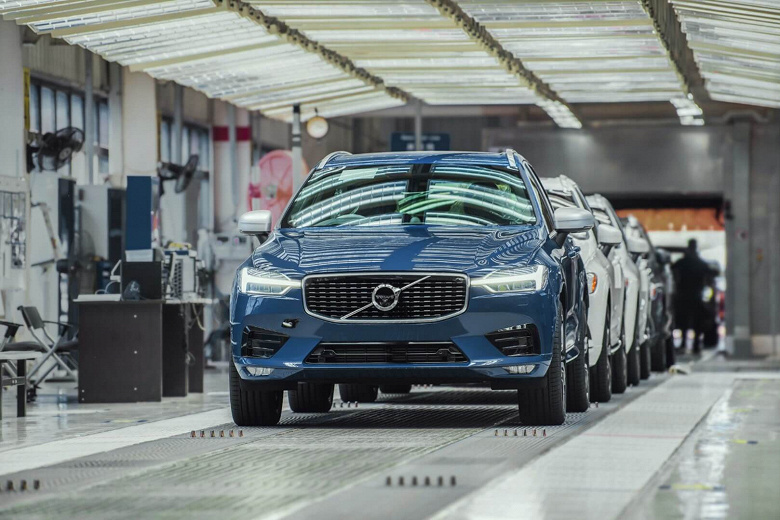
«Благодаря этому соглашению Volvo Cars станет первым крупным автопроизводителем, не являющимся китайским, с полным контролем над своими операциями в Китае», — заявил Хокан Самуэльссон (Håkan Samuelsson), исполнительный директор Volvo Cars.
Volvo Cars в последние годы росла значительно быстрее, чем другие компании на рынке Китая, и будет продолжать инвестировать в страну, чтобы поддерживать устойчивую тенденцию роста. В результате сделки Volvo Cars будет полностью владеть производственными предприятиями в Чэнду и Дацине, национальной сбытовой компанией в Китае и научно-исследовательским центром в Шанхае.
22 июля 2021 в 08:45
| Теги: Volvo, Geely, авто
| Источник: Volvo
Volvo — несомненно, известная марка автомобиля, однако зачастую неизвестно, кому принадлежит производитель автомобилей и где находится компания. После нескольких смен владельцев, в настоящее время компания принадлежит холдингу Geely.
История автопроизводителя: кому принадлежит Volvo?
В настоящее время производитель автомобилей Volvo принадлежит китайской компании Zhejiang Geely Holding (Geely Holding). Штаб-квартира компании находится в Гетеборге, Швеция.
- В 1927 году на заводе в Гетеборге был произведен и продан первый автомобиль.
- До 1999 года Volvo Cars входила в состав шведской Volvo Group.
- С 1999 года автопроизводитель входил в состав Ford Motor Company, после чего был спасен от банкротства китайским инвестором.
- В плохие экономические времена китайский инвестор вложил деньги в шведский автомобильный бренд и спас его от банкротства. Таким образом, с 2010 года Volvo принадлежит китайской Zhejiang Geely Holding (Geely Holding).
- После поглощения инвесторами компания Volvo открыла свой первый завод в Китае в 2013 году.
Volvo Group (швед. Volvokoncernen; юридически Aktiebolaget Volvo, сокращенно до AB Volvo, стилизованное под VOLVO) — это Swedish многонациональная производственная корпорация со штаб-квартирой в Гётеборге.
Соответственно, производятся ли Вольво в Китае? Volvo Cars — многонациональная компания, заводы которой расположены в Китае, Швеции и США. Для большинства мировых рынков все автомобили Volvo производятся и собираются в Швеции.. Завод в Южной Каролине в настоящее время производит Volvo S60. Завод в Чэнду, Китай, отвечает за автомобили для азиатского рынка.
Что такое логотип Volvo? Логотип Volvo напоминает древний химический символ железа.
Слово Volvo очень похоже на испанское слово, означающее «я катаюсь», что символизирует стремление Volvo упростить транспортировку. Логотип компании, круг со стрелкой, указывающей, является древним химическим символом железа.
Кроме того, кто производит двигатели Volvo?
Volvo производит собственные двигатели Volvo. Последние два года Volvo разрабатывает и производит новые агрегаты собственными силами. Двигатели будут производиться на моторном заводе Volvo в Сковде, мощность которого составляет 2,000 единиц в неделю.
Дорогие ли Volvo в обслуживании?
Дорогие ли автомобили Volvo в обслуживании? В то время как бренд Volvo имеет более высокую стоимость в списке, составленном Your Mechanic Inc., Volvo дешевле в обслуживании, чем автомобили других люксовых брендов.. За десятилетний период владения модели Volvo обходятся в среднем на 100 долларов дороже, чем модели Audi.
Вольво немецкая машина? В этом году мы видим Германия удерживает позицию третьего по величине рынка в мире для Volvo Car Corporation., после США и Швеции, внутренний рынок Volvo Cars.
Что означает имя Вольво? В переводе с латыни слово «volvere» означает «катить». После спряжения термин «вольво» имеет буквальное значение — «я качусь«.
Что значит Volvo на испанском? полет, (я) летать.
Почему символ Volvo — мужчина?
Что означает эмблема Volvo? Значок мужского пола возник в Древнем Риме, использовался как астрологический символ Марса (вероятно, его меч и щит). В эпоху Возрождения он стал идентичен мужскому полу (символ Венеры был женским полом).
Каков средний срок службы Volvo? Он также может варьироваться в зависимости от марки и года выпуска вашего Volvo. При этом при надлежащем уходе средний срок службы Volvo обычно составляет 20 лет с пробегом более 200,000 XNUMX миль.
Что означает буква T в Volvo?
В 2010 году Volvo изменила номенклатуру своих двигателей, чтобы она не зависела от объема двигателя и количества цилиндров. Буква «Д» обозначает дизель, а «Т» бензин.
Какой двигатель Volvo лучше? » Чай Двигатель S60 T6 это просто лучший двигатель, когда-либо произведенный Volvo», — отметил Дуг Спек, президент и главный исполнительный директор Volvo Cars of North America, LLC. «Он мощный, плавный и обеспечивает большую экономию топлива. Для нас большая честь, что компания Ward’s признала двигатель T6 одним из 10 лучших в 2011 году».
У Вольво много проблем?
По сравнению с другими роскошными автомобилями, Volvo имеет относительно небольшое количество сообщений о проблемах. По данным CarComplaints.com, моделью с наибольшим количеством проблем является внедорожник XC90. Хотя отзывы о XC90 в целом положительные, он славится громким шумом двигателя в салоне.
Часто ли Volvo ломается?
Одна хорошая вещь в том, что скорость разрушения низкая, всего 1%. С возрастом машина не исчезает. Во всяком случае, те владельцы автомобилей в возрасте от 3 до 8 лет совершали еще больше поездок в гараж для ремонта.
Смотрите также
Выгодно ли покупать подержанный Volvo? Удостоенный наград элегантный и безопасный внедорожник Volvo — лучший выбор для подержанного внедорожника.. Кроме того, Volvo считается одним из автомобильных брендов с наименьшим количеством отзывов.
Кто построил БМВ? Создание БМВ. BMW может проследить свои корни до Карл Рапп и Густав Отто. В 1916 году компания Flugmaschinenfabrik Gustav Otto объединилась с Bayerische Flugzeug-Werke AG (BFW) по распоряжению правительства.
Кто производит автомобили Audi?
Сегодня группе Volkswagen принадлежат десятки высокопроизводительных автопроизводителей, в том числе Lamborghini, Bugatti, Porsche и Bentley. На вопрос, кому принадлежит Audi и кто производит Audi, можно просто ответить: Группа Volkswagen Auto.
БМВ немецкая машина? Bayerische Motoren Werke всегда базировалась в немецкой земле Бавария., но если вам интересно, в какой стране производится BMW, знайте, что ваши любимые автомобили BMW и автомобили Sport Activity Vehicle® производятся в пяти разных странах по всему миру.
Какая автомобильная компания лучшая?
Лучшие производители автомобилей 2021 года
- Porsche — 93.20% Ключевые моменты: Porsche не уступает ни в одной области нашего обзора. …
- Kia – 90.14% Ключевые моменты: Сильные результаты по всем направлениям; Надежность и качество сборки являются основными моментами. …
- Тесла — 89.39%…
- Mazda — 89.38%…
- Toyota — 88.00%…
- Honda — 87.54%…
- Ягуар — 87.52%…
- Mitsubishi — 87.38%
Какой глагол попробовать по-испански? испанский глагол ProBar: пытаться.
Похоже, эта сделка станет крупнейшим финансовым событием года в автомобильной промышленности после покупки концерном PSA европейских активов фирмы General Motors. И не только в автомобильной. Компания Geely объявила о приобретении 8,2% акций шведского концерна AB Volvo, более известного как Volvo Group. Соглашение о покупке было заключено со шведской фирмой Cevian Capital, которой до сих пор принадлежал этот пакет акций. В результате китайская компания станет крупнейшим единым акционером Volvo Group и получит наибольшую, шестую часть (15,6%), голосов в правлении концерна.
Сумма сделки официально не разглашается, однако эксперты оценивают ее приблизительно в 3,8 миллиарда долларов. Дело в том, что Volvo Group — крупный международный концерн в который входят подразделения по производству грузовиков, автобусов, строительной техники, судовых и промышленных двигателей. Группа скупила десятки конкурирующих компаний, у нее есть собственные заводы в большинстве стран мира. Например, отделению Volvo Trucks принадлежат грузовые фирмы Renault Trucks, Mack и UD (бывшая Nissan Diesel), группа Volvo Bus приобрела множество автобусных марок, в том числе североамериканские Prevost и Blue Bird, немало поглощений и на счету отделения Volvo Construction Equipment. Свои заводы есть у группы Volvo и в России: площадки в Калужской области выпускают грузовики и экскаваторы.
От легкового отделения Volvo Cars шведский концерн избавился еще в 1999 году: сначала оно перешло в собственность Форда, а после не слишком успешных экспериментов с модельным рядом американцы продали его в 2010 году холдингу Geely. В свете новой сделки, похоже, намечается воссоединение компаний под началом Ли Шуфу, владельца китайской фирмы.
Напомним, что Volvo Cars стала первым и самым крупным до сих пор заграничным активом Geely. Хотя с подъемом шведской марки дела у китайских хозяев постепенно пошли в гору. За последние пять лет частный холдинг Geely успел войти в пятерку лидеров китайского автомобильного рынка, купить производителя британских кэбов London Taxi, малайзийскую автофирму Proton вместе с принадлежащей ей компанией Lotus и американского разработчика летающих автомобилей Terrafugia. А за последний год холдинг создал еще и два новых автомобильных бренда — Lynk & Co и Polestar. Однако вне сектора легковушек в активы Geely до сих пор входила только небольшая грузовая фирмочка Yuancheng.
Теперь все может поменяться. С приобретением самого крупного пакета акций AB Volvo китайский холдинг становится крупным международным концерном. К чему, впрочем, Ли Шуфу подталкивают обстоятельства: китайская компартия не так давно объявила о желании объединить три крупнейших государственных автомобильных концерна — FAW, Dongfeng и Changan. Это сложный и долгий процесс, однако первые слияния мелких подразделений уже начались, а в результате объединения на сцену может выйти огромный и мощный конгломерат, тягаться с которым остальным китайским производителям будет ой как непросто.
Прибыли успешной шведской группы помогут Geely: специалисты оценивают доходы Cevian Capital за 11 лет владения пакетом акций AB Volvo в два миллиарда евро. Впрочем, стороны пока объявили лишь о принципиальном согласии. Контрагентами могут выступить компании Nomura International и Barclays Capital Securities: после одобрения сделки антимонопольными властями они выкупят акции, принадлежащие Cevian Capital, и продадут их холдингу Geely. Случится это, разумеется, не раньше чем в наступающем году.

